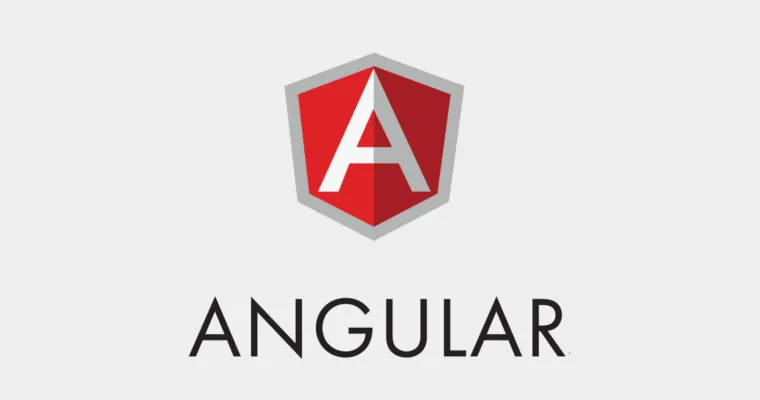Angular is the most popular JavaScript framework by far (mostly after the release of Angular 2), and React is also a very impactful library that we use for many reasons. However, other than these two, a few good frameworks are coming to our notice: Aurelia JS and Vue.js are two of them.
Aurelia.js and Angular.js are both the most popular framework. But Aurelia is a combination of Modern JavaScript modules, when used together, works as a powerful platform for creating web and mobile applications.
That is the reason why users prefer choosing Aurelia JS over AngularJS. This post contains the specific benefits of Aurelia that will help you select Aurelia over Angular.
Brief Introduction of Aurelia and Angular
Aurelia
While Google was working on an Angular 2.0 update, another framework known as Aurelia was developed. It is a product from Durandal inc. and advertised as “the next generation UI framework” and “the most advanced and developer friendly front-end framework today.” Deloitte, Chegg, dev, and more are famous companies making use of Aurelia.
662 live websites are using Aurelia. Additionally, 371 sites used Aurelia historically.
Aurelia’s Features
- Two-Way Data binding
- Routing & UI Composition
- Broad Language Support
- Testable
Also Read:8 Benefits of Using AngularJS for Web Development
Angular
AngularJS is a front-end web framework maintained by Google. This framework uses HTML as your template language and allows you to extend HTML syntax to express your application’s components clearly. Amazon, Snapchat, Tinder, and more are famous brands using Angular.js. This is the reason why many other companies prefer to hire AngularJS developers in 2021.
Angular’s Features
- MVC Framework
- Access to the POJO Model
- Unit Testing Facilities
- Templates
Get free consultation and let us know your project idea to turn it into an amazing digital product.
Aurelia has a few specific features that our team at ValueCoders found interesting and useful to our project works. Let’s start Aurelia vs Angular (2 & 1) comparison with Routing Composition –
Aurelia vs Angular – Comparison
By examining the various parameters of both frameworks, we will be able to identify the result of the Aurelia vs Angular war.
1) Routing & UI Composition
The advanced client-side router with the dynamic route patterns, child routers, pluggable pipeline, & asynchronous screen activation. In fact, you can do dynamic, data-driven UI composition without a router.
Also, Through a router-view component, any number of routes can be handled. Here’s an example:
“app.html”:
<div>
<router-view></router-view>
</div>
“app.js”:
export class App {
configureRouter(config, router) {
title = 'Title for App';
config.map([
{ route: ['/routeName/'], name: 'FileNameToRun', moduleId: 'PathOfFileToRun', nav: true, title:'Title for Route' }
]);
this.router = router;
}
}
These features are also there in Angular 2; however, Angular was ideally built as a monolithic framework. All of its components were wrapped into one large bundle. This monolithic architecture made it difficult to remove components and change them when necessary.
Aurelia JS, on the other hand, takes a more modern approach. While it’s a full framework, it is composed of a collection of libraries that work together using well-defined interfaces — so that it’s completely modular.
This means that a web app only needs to include the dependencies that it needs. Further, though, it means that individual components can be swapped or changed with minimal confusion as long as implementations cohere to the defined interface.
You may also like: ANGULARJS VS REACTJS: WHAT’S GOOD FOR YOUR BUSINESS?
2) MV* Approach
Aurelia follows a model-view approach like nobody else. In Aurelia, there is no need to specify the particular controllers of view models; the naming convention will do that part. Here is a simple example –
“AnyFile.html”: Any file loaded under router-view or called at the time of instantiating Aurelia App.
<template>
<!-- HTML and Aurelia(Model) code goes here -->
</template>
“AnyFile.js”: Controller of the Anyfile.html view-model.
export class AnyFile {
constructor() {
}
}
While comparing with Angular, you will find the difference in watching the MV* components. More precisely, the digest cycle of angular is different from Aurelia. A big disadvantage of AngularJS, at least v1, is that it has a very sheer learning curve.
You will have to know its internals, the complete digest cycle pretty well, and have to know the effect on performance while using filters and $watch expressions. Whereas Aurelia is simple, and the learning curve is quite smooth.
Read More: Top 15 Front-end Development Tools In 2018
3) Many Language Support
Aurelia’s APIs are deliberately designed to be employed naturally from both today’s and tomorrow’s most useful web programming languages. Aurelia supports ES2015, ES5, ES2016, and Typescript, which is very important and gives you high extensibility.
Writing web applications utilizing ES6 is not a new thing. In fact, there are several solutions out there that can enable you to write Angular apps utilizing ES6 in AngularJS mobile app development.
However, Aurelia takes it a step further by rendering support for ES6 as well as a Gulpfile with a customized build system for ensuing your ES6 down to ES5 compatible code.
Also Read: Benefits of Using AngularJS for Web Development
4) Extensible HTML
Aurelia’s extensible HTML compiler lets you create custom HTML elements. It helps you add custom attributes to existing elements and control template generation, all with full support for data-binding, dynamic loading, and high-performance batched rendering. Here’s an example to help you out:
“AnyParentFile.html”:
<template>
<div custom-attribute></div>
<!-- Custom Element -->
<child-element></child-element>
</template>
“ChildElement.html”: View Model for custom element
<template>
<!-- Child element view model code goes here -->
</template>
“AnyParentFile.js”: Controller for AnyParentFile
export class AnyParentFile {
constructor() {
}
}
“ChildElement.js”: Controller for ChildElement
// Module customElement
import { customElement } from 'aurelia-framework';
// create custom element childElement
@customElement('childElement')
export class ChildElement {
constructor() {
}
}
When AngularJS was developed, the standards for extending HTML were not mature. That’s why AngularJS created proprietary solutions for templating and custom elements.
Today, the Web Component spec defines a set of rules for both custom elements & templating. Aurelia actively coheres to these standards, supporting the HTML imports, <template> element, Shadow DOM, and native custom elements.
Schedule a free consultation with us and share your project vision for world-class business solutions.
5) Data-Binding
Aurelia supports two types of data-binding:
- One-way Data-Binding
- Two-way Data-Binding
By using adaptive techniques, you can select the most efficient way to observe each property in your model and automatically synchronize your UI with best-in-class performance. Here is an example-
Two-way Data-Binding:
<!-- these have the same result --> <input value.bind="anyValue & twoWay> <input value.two-way="anyValue">
One-Way Data-Binding:
<!-- these have the same result --> <input value.bind="anyValue & oneWay> <input value.one-way="anyValue">
Angular also allows two-way data binding; however, for new developers, it’s not that easy to adopt the Angular way. Secondly, with a high number of filters, watches, a complex DOM structure, and so on, you will find performance issues. Though some improvements are implemented, later on, they are not much effective.
On the other side, as Aurelia is less complex and not difficult to learn, there are fewer chances of performance issues to implement two-way data binding.
Bottom line
Aurelia includes a minimal set of conventions for ease of use, which is very simple to reconfigure or override. Hence, it depends on the project specification and personal choice when you prefer a framework. If you like more freedom while doing the work, then Aurelia is for you.
The experienced developers know the correct and full use frameworks like Aurelia and Angular. So it will be beneficial for the enterprises to hire dedicated development teams from a reliable AngularJS development company who have good hands-on making use of JavaScript frameworks.
In order to avail of the leading solution, it will be better to hire developers from the recognized company, i.e., ValueCoders. The company has 16+ years of in-market experience. The organization’s skilled developers provide quality web development services that can help small, moderate, and large enterprises in building unique and impactful web apps.








